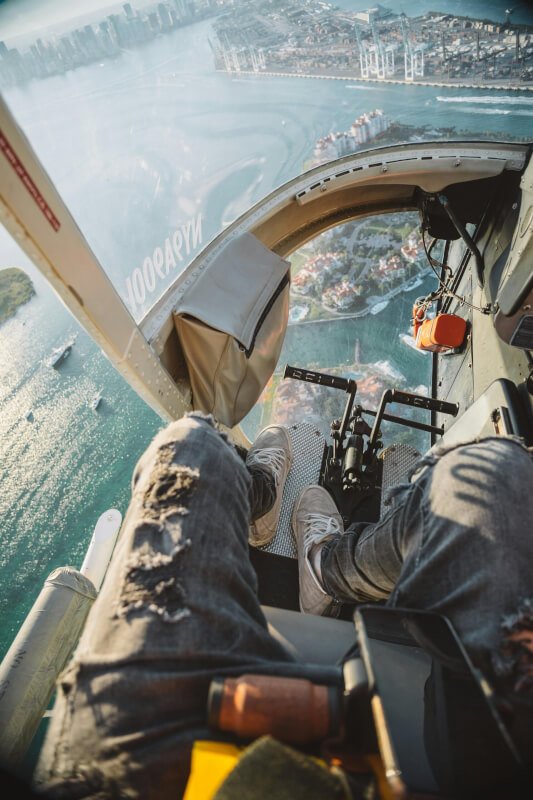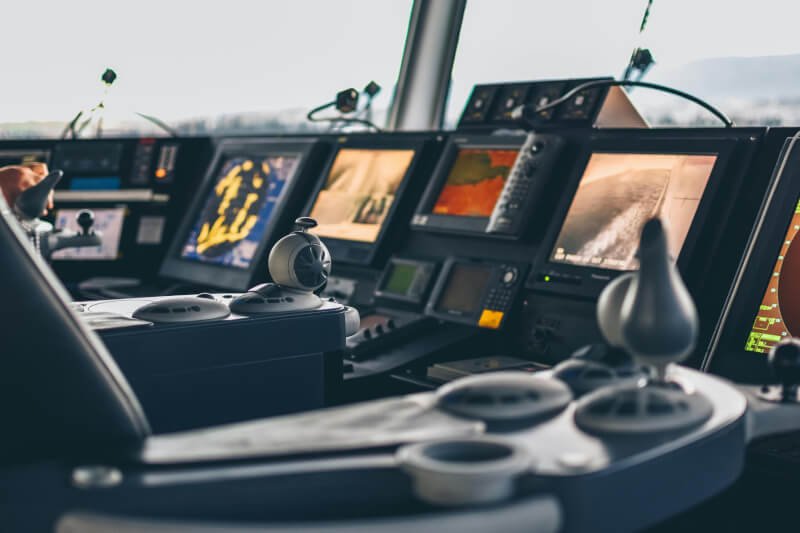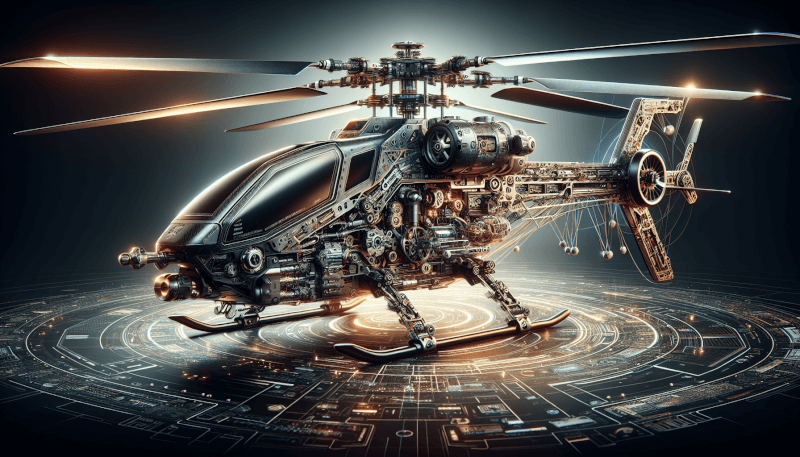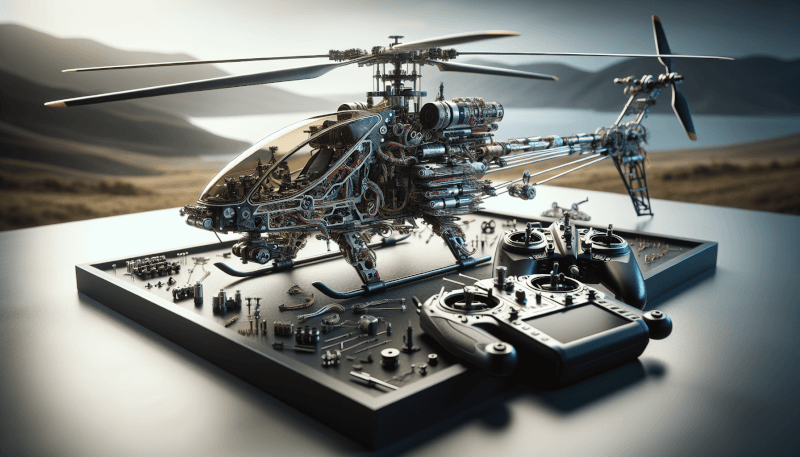You are a hobbyist who is interested in flying remote control helicopters. As you begin your search for the perfect RC heli kit, it is important to know what to look for in terms of quality. From durable construction to advanced features, this article will guide you through the key factors to consider when selecting a top-notch RC heli kit. So, buckle up and get ready to take your flying skills to new heights! If you’re in the market for a remote control helicopter, you’ll quickly realize that there are numerous options to choose from. RC helicopters come in various sizes, designs, and power sources, making it important to consider several factors before making your purchase. In this article, we will guide you through the key elements to look for in a quality RC heli kit, helping you find the perfect model for your needs and preferences.
Size
First and foremost, you need to consider the size of the RC helicopter you want to purchase. The size of the helicopter will impact its flight characteristics, stability, and maneuverability. Generally, RC helicopters are categorized into three size ranges: mini or micro size, standard size, and large size.
Mini or Micro Size
Mini or micro size helicopters are perfect for indoor flying or beginners due to their small size and lightweight construction. They are typically more affordable and easier to control, making them ideal for those who are just starting out in the RC helicopter hobby. These helicopters are also great for practicing flight maneuvers in tighter spaces.
Standard Size
Standard size helicopters are a popular choice among intermediate and advanced RC helicopter enthusiasts. They offer a balance between maneuverability and stability, providing a more realistic flying experience. Standard size helicopters can be flown both indoors and outdoors, allowing for more flexibility in terms of flight locations.
Large Size
For experienced pilots who want the ultimate RC helicopter experience, large size helicopters are the way to go. These helicopters offer exceptional stability, allowing for precise control and advanced flight maneuvers. They are typically more powerful and can withstand stronger winds, making them suitable for outdoor flying. However, due to their larger size and higher complexity, they may require more skill to operate and maintain.
Design
The design of an RC helicopter encompasses various aspects, including frame construction, rotor design, tail design, gyroscopic stability, and flight controls. Each of these design elements contributes to the overall performance and flight characteristics of the helicopter.
Frame Construction
The frame construction of an RC helicopter plays a crucial role in its durability and ability to withstand crashes or accidents. Look for helicopters with frames made from high-quality materials such as carbon fiber or aluminum, as these materials offer better strength and rigidity.
Rotor Design
The rotor design is another important aspect to consider. Most RC helicopters feature either a single main rotor or coaxial rotor design. Single rotor helicopters are more common and provide better maneuverability, while coaxial rotor helicopters offer improved stability and are easier to control, making them suitable for beginners.
Tail Design
The tail design influences the helicopter’s yaw control, which is essential for performing turning maneuvers. Look for helicopters with tail rotors that are properly balanced and capable of generating sufficient thrust to ensure smooth and precise yaw control.
Gyroscopic Stability
Gyroscopic stability is crucial for maintaining balance and stability during flight. Look for helicopters with built-in gyro stabilization systems, as these systems help compensate for external factors such as wind or sudden movements, resulting in a smoother and more stable flight experience.
Flight Controls
The flight controls of an RC helicopter can vary depending on the model and complexity. Beginners might prefer helicopters with simple controls, such as throttle, pitch, roll, and yaw controls, while more advanced pilots may require additional features such as adjustable sensitivity or programmable flight modes.

Power Source
The power source of an RC helicopter determines its propulsion and flight time. There are three main types of power sources: electric powered, nitro powered, and gas powered. Each has its own advantages and considerations.
Electric Powered
Electric powered helicopters are the most common and user-friendly option for beginners and casual flyers. They are typically quieter, cleaner, and require less maintenance compared to their combustion engine counterparts. Electric helicopters are powered by rechargeable batteries, which provide consistent power and flight times depending on the battery capacity.
Nitro Powered
Nitro powered helicopters are fueled by a blend of methanol, nitro methane, and oil. They offer a more realistic sound and flight experience, making them popular among enthusiasts. Nitro helicopters require proper fuel mixing and tuning, as well as regular maintenance to keep the engine in top condition.
Gas Powered
Gas powered helicopters, also known as gasoline-powered or petrol-powered helicopters, are less common but offer increased flight times and power compared to electric or nitro helicopters. Gas powered helicopters use gasoline mixed with oil, similar to small engines used in lawnmowers or chainsaws. These helicopters require more maintenance and tuning compared to other types of power sources.
Flight Time
The flight time of an RC helicopter is an important factor to consider, as it determines how long you can enjoy flying before needing to recharge or refuel. The flight time is dependent on the power source and the capacity of the battery or fuel tank.
Battery Life
For electric powered helicopters, the flight time is determined by the battery life. Look for helicopters with higher battery capacities, as they will provide longer flight times. Additionally, consider purchasing extra batteries to extend your flying session without interruption.
Fuel Capacity
For nitro or gas powered helicopters, the flight time depends on the fuel capacity of the tank. Larger fuel tanks allow for longer flight times, but they also increase the weight of the helicopter. It’s essential to find a balance between flight time and weight to ensure optimal performance.
Charging Time
If you opt for an electric powered helicopter, consider the charging time required to fully recharge the batteries. Look for helicopters that come with fast chargers or have the option to upgrade to faster chargers, as this will minimize downtime and maximize your flying sessions.

Control System
The control system of an RC helicopter includes the transmitter range, radio system, channels, and frequency. These factors directly impact the range and control capabilities of the helicopter.
Transmitter Range
The transmitter range refers to the distance between the controller and the helicopter in which reliable communication can be maintained. Consider how far you plan to fly and choose a helicopter with a transmitter range that accommodates your needs. Longer transmitter ranges offer more freedom to explore larger areas but may come at a higher price.
Radio System
RC helicopters use various radio systems, such as frequency-modulated (FM) or spread spectrum (SS) radios. Spread spectrum radios are more popular due to their superior signal reliability and resistance to interference. They also allow for multiple helicopters to fly simultaneously without signal conflicts.
Channels
Channels refer to the number of independent controls available on the transmitter. Beginners typically start with helicopters that have fewer channels, while more advanced pilots may prefer helicopters with more channels to enable more precise control and maneuverability.
Frequency
When choosing an RC helicopter, it’s important to consider the frequency compatibility with your local flying area and other pilots. Most helicopters operate on either 2.4 GHz or 5.8 GHz frequencies, which are less prone to interference and offer better signal stability compared to older frequency options.
Stability
Stability is a crucial factor to consider when looking for an RC helicopter. A stable helicopter is easier to control and provides a more enjoyable flying experience, especially for beginners.
Built-in Gyro
Look for helicopters with built-in gyro stabilization systems. These systems help counteract external forces such as wind gusts or sudden movements, resulting in improved stability and smoother flight performance. A helicopter with a reliable gyro system will be less likely to drift, making it easier to maintain control during flights.
Flight Modes
Some advanced RC helicopters offer different flight modes or stability modes. These modes allow pilots to switch between different levels of stability or agility, catering to different skill levels and flight preferences. Beginners can start with a more stable flight mode and gradually progress to more agile modes as they gain experience.
Hovering Capabilities
Hovering is a fundamental skill in RC helicopter flying, requiring precise control and stability. Look for helicopters that have excellent hovering capabilities, as this indicates a well-tuned and stable helicopter. A helicopter that can hover effortlessly will make learning and mastering other flight maneuvers much easier.

Durability
Durability is an important consideration, especially for beginners or those flying in outdoor environments where crashes or accidents are more likely to occur. Look for helicopters that are built with high-quality materials and have crash-resistant features.
Material Quality
Opt for helicopters with frames and components made from durable materials such as carbon fiber or aluminum. These materials offer better strength and rigidity, increasing the helicopter’s overall durability and resistance to impact.
Crash Resistance
Some helicopters come with features designed to minimize damage during crashes or accidents. These features may include impact-resistant rotor blades or flexible landing gear that absorb the impact. Choosing a helicopter with enhanced crash resistance can save you money on repair costs and keep you flying for longer.
Spare Parts Availability
Regardless of how durable a helicopter may be, accidents happen, and components may need to be replaced. Before purchasing an RC helicopter, check the availability of spare parts for that specific model. Opt for helicopters from brands that have a good reputation for providing readily available spare parts. This ensures that you can easily and quickly repair your helicopter and get back to flying.
Assembly
The level of assembly required for an RC helicopter varies depending on the kit type. Understanding the different assembly options will help you choose a kit that aligns with your skill level and preferences.
RTF (Ready-to-Fly)
RTF helicopters come fully assembled and ready to fly out of the box. They are perfect for beginners or those who prefer a hassle-free experience. Simply charge the batteries, bind the transmitter to the helicopter, and you’re ready to take off.
BNF (Bind-N-Fly)
BNF helicopters are partially assembled and require you to provide your own transmitter. These helicopters come with the receiver already installed, allowing you to bind your own compatible transmitter. This option is suitable for those who already own a transmitter or want the flexibility to choose their own controller.
ARF (Almost-Ready-to-Fly)
ARF helicopters are partially assembled and may require additional components or equipment to complete the setup. They are suitable for more experienced pilots who enjoy the building process and have a collection of spare parts or specific equipment.
Kit
Kits are the most customizable option but require the most assembly and building skills. They often include a frame, rotor blades, motor, and other necessary components. Building a kit from scratch allows you to have full control over the helicopter’s specifications and performance but requires significant technical knowledge and experience.

Price Range
RC helicopters come in various price ranges, catering to different budgets and requirements. Understanding the different price ranges will help you set realistic expectations and find a helicopter that offers good value for money.
Entry-level
Entry-level helicopters are typically more affordable and suitable for beginners or casual flyers. They provide a solid starting point for learning the basics of RC helicopter flying without breaking the bank. While they may lack some advanced features, they still offer a fun and rewarding flying experience.
Mid-range
Mid-range helicopters offer a balance between price and features. They often provide better performance, durability, and stability compared to entry-level models. These helicopters are suitable for both intermediate and experienced pilots looking for more advanced features and flight capabilities.
High-end
High-end helicopters are designed for experienced pilots who demand the best performance, durability, and precision. These helicopters often come with advanced features, such as programmable flight modes or high-quality components. While they may come with a higher price tag, high-end helicopters deliver unparalleled performance and are built to withstand intense flying sessions.
Brand Reputation
Considering the reputation of the brand behind the RC helicopter is important, as it reflects the quality of the product and the reliability of the manufacturer.
Popular and Established Brands
Opting for well-known and established brands is a safer choice, as these brands have a reputation for producing high-quality RC helicopters. Popular brands often have a wide range of products, spare parts availability, and excellent customer support, ensuring a smooth and pleasant experience for customers.
Customer Reviews and Feedback
Before making a purchase, read customer reviews and feedback to get insights from other RC helicopter enthusiasts. Real-world experiences can provide valuable information about the product’s performance, durability, and overall satisfaction.
Warranty and Customer Support
Check the warranty offered by the manufacturer, as it demonstrates their confidence in the quality and durability of the RC helicopter. Additionally, consider the availability and responsiveness of customer support, as it can greatly impact your experience if you encounter any issues or have questions regarding the product.
In conclusion, when choosing a quality RC heli kit, it’s essential to consider the size, design, power source, flight time, control system, stability, durability, assembly requirements, price range, and brand reputation. By carefully evaluating these factors and understanding your own preferences and skill level, you can find the perfect RC helicopter that provides you with hours of enjoyment and a fulfilling flying experience. Happy flying!



